1 Introduction
1.1 About this manual
1.2 Microprocessor versions covered by this manual
2 Out-of-order execution (All processors except P1, PMMX)
2.1 Instructions are split into µops
2.2 Register renaming
3 Branch prediction (all processors)
3.1 Prediction methods for conditional jumps
Saturating counter
Two-level adaptive predictor with local history tables
Two-level adaptive predictor with global history table
The agree predictor
Loop counter
Indirect jump prediction
Subroutine return prediction
Hybrid predictors
Future branch prediction methods
3.2 Branch prediction in P1
BTB is looking ahead (P1)
Consecutive branches
3.3 Branch prediction in PMMX, PPro, P2, and P3
BTB organization
Misprediction penalty
Pattern recognition for conditional jumps
Tight loops (PMMX)
Indirect jumps and calls (PMMX, PPro, P2 and P3)
JECXZ and LOOP (PMMX)
3.4 Branch prediction in P4 and P4E
Pattern recognition for conditional jumps in P4
Alternating branches
Pattern recognition for conditional jumps in P4E
3.5 Branch prediction in PM and Core2
Misprediction penalty
Pattern recognition for conditional jumps
Pattern recognition for indirect jumps and calls
BTB organization
3.6 Branch prediction in Intel Nehalem
Misprediction penalty
Pattern recognition for conditional jumps
Pattern recognition for indirect jumps and calls
BTB organization
Prediction of function returns
3.7 Branch prediction in Intel Sandy Bridge and Ivy Bridge
Misprediction penalty
Pattern recognition for conditional jumps
Pattern recognition for indirect jumps and calls
BTB organization
Prediction of function returns
3.8 Branch prediction in Intel Haswell, Broadwell and Skylake
Misprediction penalty
Pattern recognition for conditional jumps
Pattern recognition for indirect jumps and calls
BTB organization
Prediction of function returns
3.9 Branch prediction in Intel Atom, Silvermont and Knights Landing
Misprediction penalty
Prediction of indirect branches
Return stack buffer
3.10 Branch prediction in VIA Nano
3.11 Branch prediction in AMD K8 and K10
BTB organization
Misprediction penalty
Pattern recognition for conditional jumps
Prediction of indirect branches
Return stack buffer
Literature:
3.12 Branch prediction in AMD Bulldozer, Piledriver and Steamroller
Misprediction penalty
Return stack buffer
Literature:
3.13 Branch prediction in AMD Bobcat and Jaguar
BTB organization
Misprediction penalty
Pattern recognition for conditional jumps
Prediction of indirect branches
Return stack buffer
Literature:
3.14 Indirect jumps on older processors
3.15 Returns (all processors except P1)
3.16 Static prediction
Static prediction in P1 and PMMX
Static prediction in PPro, P2, P3, P4, P4E
Static prediction in PM and Core2
Static prediction in AMD
3.17 Close jumps
Close jumps on PMMX
Chained jumps on PPro, P2 and P3
Chained jumps on P4, P4E and PM
Chained jumps on AMD
4 Pentium 1 and Pentium MMX pipeline
4.1 Pairing integer instructions
Perfect pairing
Imperfect pairing
4.2 Address generation interlock
4.3 Splitting complex instructions into simpler ones
4.4 Prefixes
4.5 Scheduling floating point code
5 Pentium 4 (NetBurst) pipeline
5.1 Data cache
5.2 Trace cache
Economizing trace cache use on P4
Trace cache use on P4E
Trace cache delivery rate
Branches in the trace cache
Guidelines for improving trace cache performance
5.3 Instruction decoding
5.4 Execution units
5.5 Do the floating point and MMX units run at half speed?
Hypothesis 1
Hypothesis 2
Hypothesis 3
Hypothesis 4
5.6 Transfer of data between execution units
Explanation A
Explanation B
Explanation C
5.7 Retirement
5.8 Partial registers and partial flags
5.9 Store forwarding stalls
5.10 Memory intermediates in dependency chains
Transferring parameters to procedures
Transferring data between floating point and other registers
Literature
5.11 Breaking dependency chains
5.12 Choosing the optimal instructions
INC and DEC
8-bit and 16-bit integers
Memory stores
Shifts and rotates
Integer multiplication
LEA
Register-to-register moves with FP, mmx and xmm registers
5.13 Bottlenecks in P4 and P4E
Memory access
Execution latency
Execution unit throughput
Port throughput
Trace cache delivery
Trace cache size
µop retirement
Instruction decoding
Branch prediction
Replaying of µops
6 Pentium Pro, II and III pipeline
6.1 The pipeline in PPro, P2 and P3
6.2 Instruction fetch
6.3 Instruction decoding
Instruction length decoding
The 4-1-1 rule
IFETCH block boundaries
Instruction prefixes
6.4 Register renaming
6.5 ROB read
6.6 Out of order execution
6.7 Retirement
6.8 Partial register stalls
Partial flags stalls
Flags stalls after shifts and rotates
6.9 Store forwarding stalls
6.10 Bottlenecks in PPro, P2, P3
7 Pentium M pipeline
7.1 The pipeline in PM
7.2 The pipeline in Core Solo and Duo
7.3 Instruction fetch
7.4 Instruction decoding
7.5 Loop buffer
7.6 Micro-op fusion
7.7 Stack engine
7.8 Register renaming
7.9 Register read stalls
7.10 Execution units
7.11 Execution units that are connected to both port 0 and 1
7.12 Retirement
7.13 Partial register access
Partial flags stall
7.14 Store forwarding stalls
7.15 Bottlenecks in PM
Memory access
Instruction fetch and decode
Micro-operation fusion
Register read stalls
Execution ports
Execution latencies and dependency chains
Partial register access
Branch prediction
Retirement
8 Core 2 and Nehalem pipeline
8.1 Pipeline
8.2 Instruction fetch and predecoding
Loopback buffer
Length-changing prefixes
8.3 Instruction decoding
8.4 Micro-op fusion
8.5 Macro-op fusion
8.6 Stack engine
8.7 Register renaming
8.8 Register read stalls
8.9 Execution units
Data bypass delays on Core2
Data bypass delays on Nehalem
Mixing µops with different latencies
8.10 Retirement
8.11 Partial register access
Partial access to general purpose registers
Partial flags stall
Partial access to XMM registers
8.12 Store forwarding stalls
8.13 Cache and memory access
Cache bank conflicts
Misaligned memory accesses
8.14 Breaking dependency chains
8.15 Multithreading in Nehalem
8.16 Bottlenecks in Core2 and Nehalem
Instruction fetch and predecoding
Instruction decoding
Register read stalls
Execution ports and execution units
Execution latency and dependency chains
Partial register access
Retirement
Branch prediction
Memory access
Literature
9 Sandy Bridge and Ivy Bridge pipeline
9.1 Pipeline
9.2 Instruction fetch and decoding
9.3 µop cache
9.4 Loopback buffer
9.5 Micro-op fusion
9.6 Macro-op fusion
9.7 Stack engine
9.8 Register allocation and renaming
Special cases of independence
Instructions that need no execution unit
Elimination of move instructions
9.9 Register read stalls
9.10 Execution units
Read and write bandwidth
Data bypass delays
Mixing µops with different latencies
256-bit vectors
Underflow and subnormals
9.11 Partial register access
Partial flags stall
Partial access to vector registers
9.12 Transitions between VEX and non-VEX modes
9.13 Cache and memory access
Cache bank conflicts
Misaligned memory accesses
Prefetch instructions
9.14 Store forwarding stalls
9.15 Multithreading
9.16 Bottlenecks in Sandy Bridge and Ivy Bridge
Instruction fetch and predecoding
µop cache
Register read stalls
Execution ports and execution units
Execution latency and dependency chains
Partial register access
Retirement
Branch prediction
Memory access
Multithreading
Literature
10 Haswell and Broadwell pipeline
10.1 Pipeline
10.2 Instruction fetch and decoding
10.3 µop cache
10.4 Loopback buffer
10.5 Micro-op fusion
10.6 Macro-op fusion
10.7 Stack engine
10.8 Register allocation and renaming
Special cases of independence
Instructions that need no execution unit
Elimination of move instructions
10.9 Execution units
Fused multiply and add
How many input dependencies can a µop have?
Read and write bandwidth
Data bypass delays
256-bit vectors
Mixing µops with different latencies
Underflow and subnormals
10.10 Partial register access
Partial flags access
Partial access to vector registers
10.11 Cache and memory access
Cache bank conflicts
Misaligned memory accesses
10.12 Store forwarding stalls
10.13 Multithreading
10.14 Bottlenecks in Haswell and Broadwell
Instruction fetch and predecoding
µop cache
Execution ports and execution units
Floating point addition has lower throughput than multiplication
Execution latency and dependency chains
Branch prediction
Memory access
Multithreading
Literature
11 Skylake pipeline
11.1 Pipeline
11.2 Instruction fetch and decoding
11.3 µop cache
11.4 Loopback buffer
11.5 Micro-op fusion
11.6 Macro-op fusion
11.7 Stack engine
11.8 Register allocation and renaming
Special cases of independence
Instructions that need no execution unit
Elimination of move instructions
11.9 Execution units
Fused multiply and add
How many input dependencies can a µop have?
Read and write bandwidth
Data bypass delays
256-bit vectors
Warm-up period for 256-bit vector operations
Underflow and subnormals
11.10 Partial register access
Partial flags access
Partial access to vector registers
11.11 Cache and memory access
Cache bank conflicts
11.12 Store forwarding stalls
11.13 Multithreading
11.14 Bottlenecks in Skylake
Instruction fetch and predecoding
µop cache
Execution ports and execution units
Execution latency and dependency chains
Branch prediction
Memory access
Multithreading
Literature
12 Intel Atom pipeline
12.1 Instruction fetch
12.2 Instruction decoding
12.3 Execution units
12.4 Instruction pairing
12.5 X87 floating point instructions
12.6 Instruction latencies
12.7 Memory access
12.8 Branches and loops
12.9 Multithreading
12.10 Bottlenecks in Atom
13 Intel Silvermont pipeline
13.1 Pipeline
13.2 Instruction fetch and decoding
13.3 Loop buffer
13.4 Macro-op fusion
13.5 Register allocation and out of order execution
13.6 Special cases of independence
13.7 Execution units
Read and write bandwidth
Data bypass delays
Underflow and subnormals
13.8 Partial register access
13.9 Cache and memory access
13.10 Store forwarding
13.11 Multithreading
13.12 Bottlenecks in Silvermont
Instruction fetch and decoding
Execution ports and execution units
Out of order execution
Branch prediction
Memory access
Multithreading
Literature
14 Intel Knights Corner pipeline
Literature
15 Intel Knights Landing pipeline
15.1 Pipeline
15.2 Instruction fetch and decoding
15.3 Loop buffer
15.4 Execution units
Latencies of the f.p./vector unit
Mask operations
Data bypass delays
Underflow and subnormals
Mathematical functions
15.5 Partial register access
15.6 Partial access to vector registers and VEX / non-VEX transitions
15.7 Special cases of independence
15.8 Cache and memory access
Read and write bandwidth
15.9 Store forwarding
15.10 Multithreading
15.11 Bottlenecks in Knights Landing
Instruction fetch and decoding
Microcode
Execution ports and execution units
Out of order execution
Branch prediction
Memory access
Multithreading
Literature
16 VIA Nano pipeline
16.1 Performance monitor counters
16.2 Instruction fetch
16.3 Instruction decoding
16.4 Instruction fusion
16.5 Out of order system
16.6 Execution ports
16.7 Latencies between execution units
Latencies between integer and floating point type XMM instructions
16.8 Partial registers and partial flags
16.9 Breaking dependence
16.10 Memory access
16.11 Branches and loops
16.12 VIA specific instructions
16.13 Bottlenecks in Nano
17 AMD K8 and K10 pipeline
17.1 The pipeline in AMD K8 and K10 processors
17.2 Instruction fetch
17.3 Predecoding and instruction length decoding
17.4 Single, double and vector path instructions
17.5 Stack engine
17.6 Integer execution pipes
17.7 Floating point execution pipes
17.8 Mixing instructions with different latency
17.9 64 bit versus 128 bit instructions
17.10 Data delay between differently typed instructions
17.11 Partial register access
17.12 Partial flag access
17.13 Store forwarding stalls
17.14 Loops
17.15 Cache
Level-2 cache
Level-3 cache
17.16 Bottlenecks in AMD K8 and K10
Instruction fetch
Out-of-order scheduling
Execution units
Mixed latencies
Dependency chains
Jumps and branches
Retirement
18 AMD Bulldozer, Piledriver and Steamroller pipeline
18.1 The pipeline in AMD Bulldozer, Piledriver and Steamroller
18.2 Instruction fetch
18.3 Instruction decoding
18.4 Loop buffer
18.5 Instruction fusion
18.6 Stack engine
18.7 Out-of-order schedulers
18.8 Integer execution pipes
18.9 Floating point execution pipes
Subnormal operands
Fused multiply and add
18.10 AVX instructions
18.11 Data delay between different execution domains
18.12 Instructions that use no execution units
18.13 Partial register access
18.14 Partial flag access
18.15 Dependency-breaking instructions
18.16 Branches and loops
18.17 Cache and memory access
18.18 Store forwarding stalls
18.19 Bottlenecks in AMD Bulldozer, Piledriver and Steamroller
Power saving
Shared resources
Instruction fetch
Instruction decoding
Out-of-order scheduling
Execution units
256-bit memory writes
Mixed latencies
Dependency chains
Jumps and branches
Memory and cache access
Retirement
18.20 Literature
19 AMD Bobcat and Jaguar pipeline
19.1 The pipeline in AMD Bobcat and Jaguar
19.2 Instruction fetch
19.3 Instruction decoding
19.4 Single, double and complex instructions
19.5 Integer execution pipes
19.6 Floating point execution pipes
19.7 Mixing instructions with different latency
19.8 Dependency-breaking instructions
19.9 Data delay between differently typed instructions
19.10 Partial register access
19.11 Cache
19.12 Store forwarding stalls
19.13 Bottlenecks in Bobcat and Jaguar
19.14 Literature:
20 Comparison of microarchitectures
20.1 The AMD K8 and K10 kernel
20.2 The AMD Bulldozer, Piledriver and Steamroller kernel
20.3 The Pentium 4 kernel
20.4 The Pentium M kernel
20.5 Intel Core 2 and Nehalem microarchitecture
20.6 Intel Sandy Bridge and later microarchitectures
21 Comparison of low power microarchitectures
21.1 Intel Atom microarchitecture
21.2 VIA Nano microarchitecture
21.3 AMD Bobcat microarchitecture
21.4 Conclusion
22 Future trends
23 Literature
24 Copyright notice
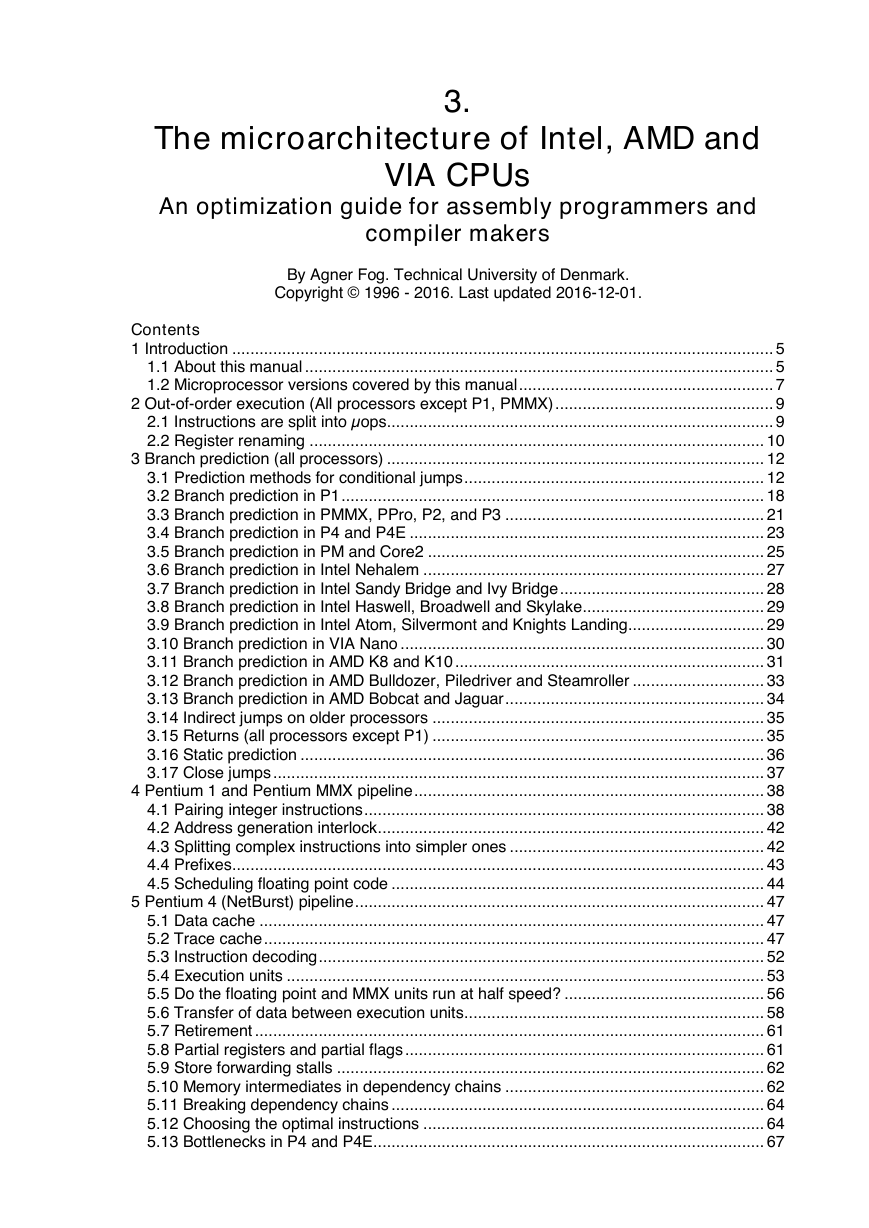
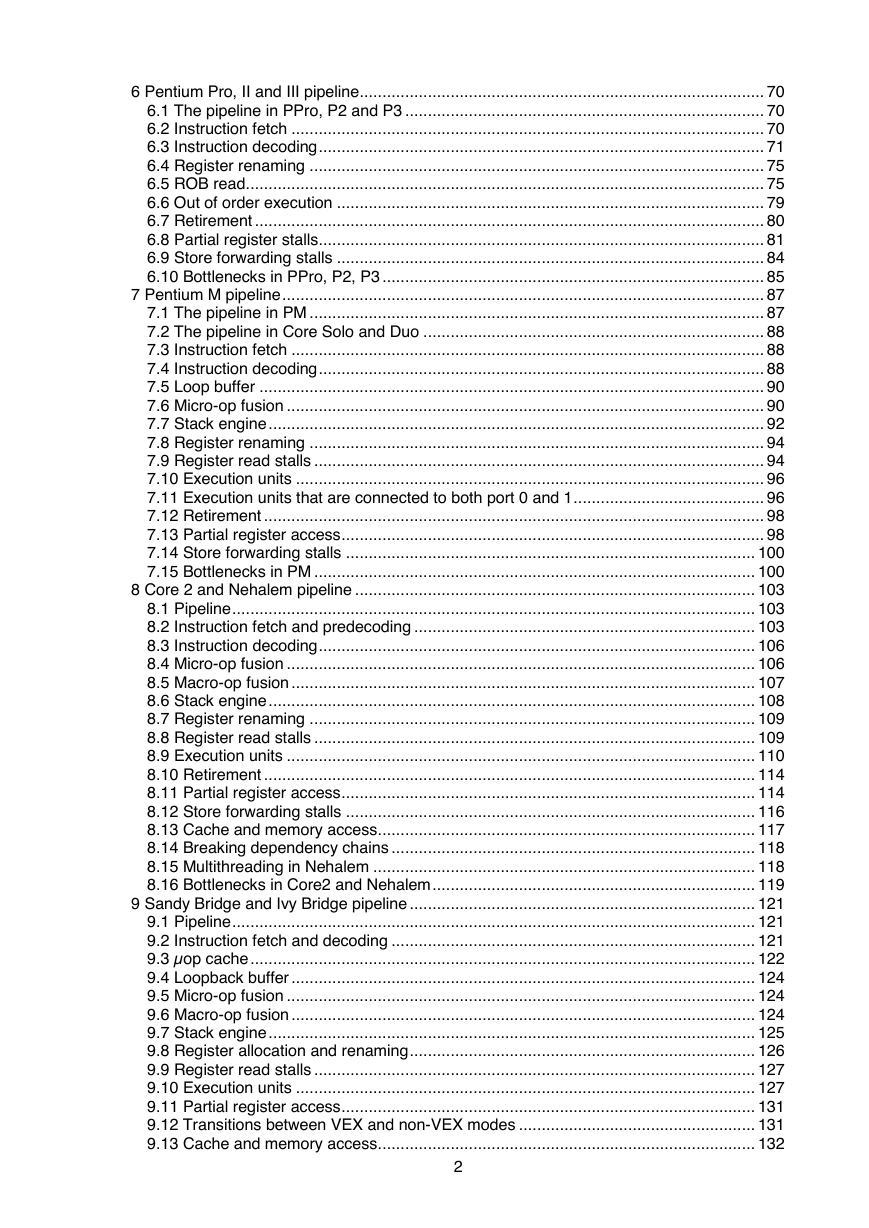
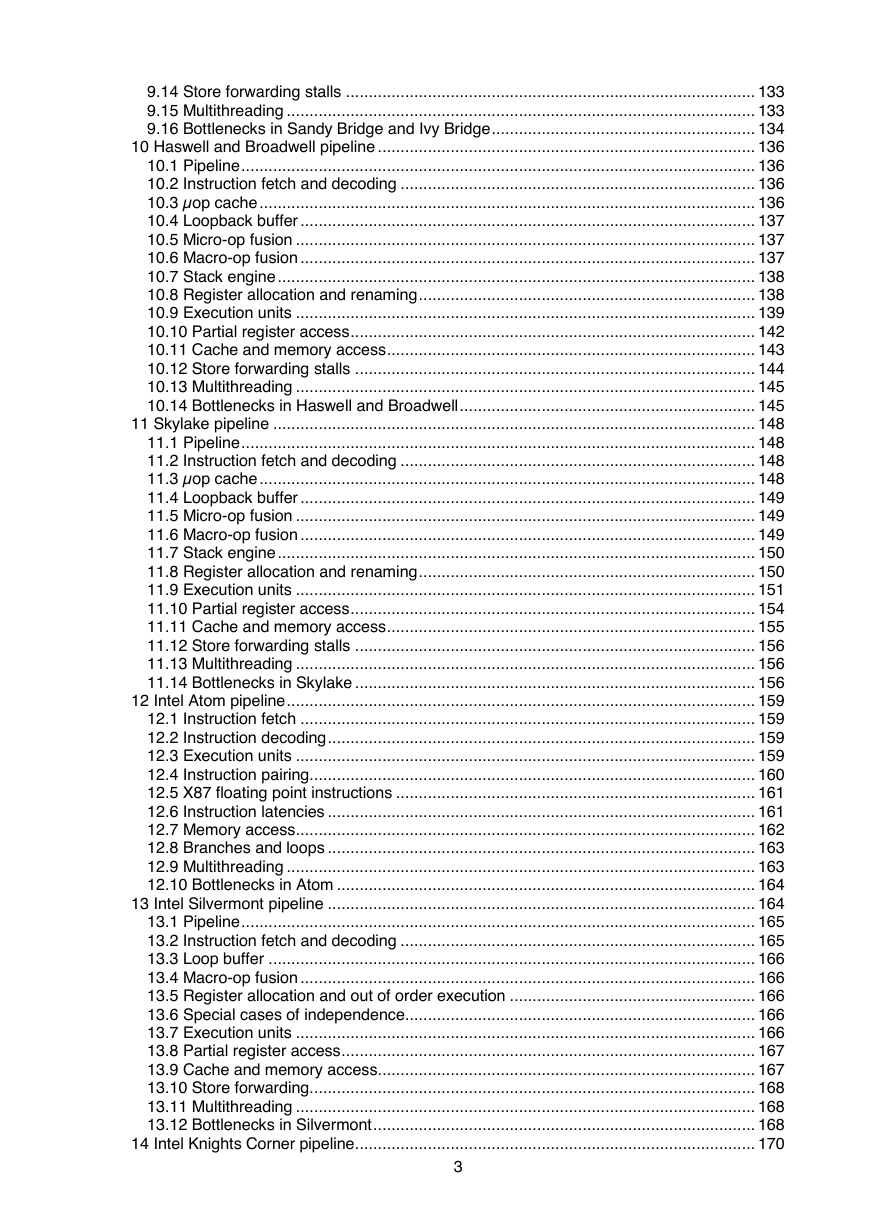

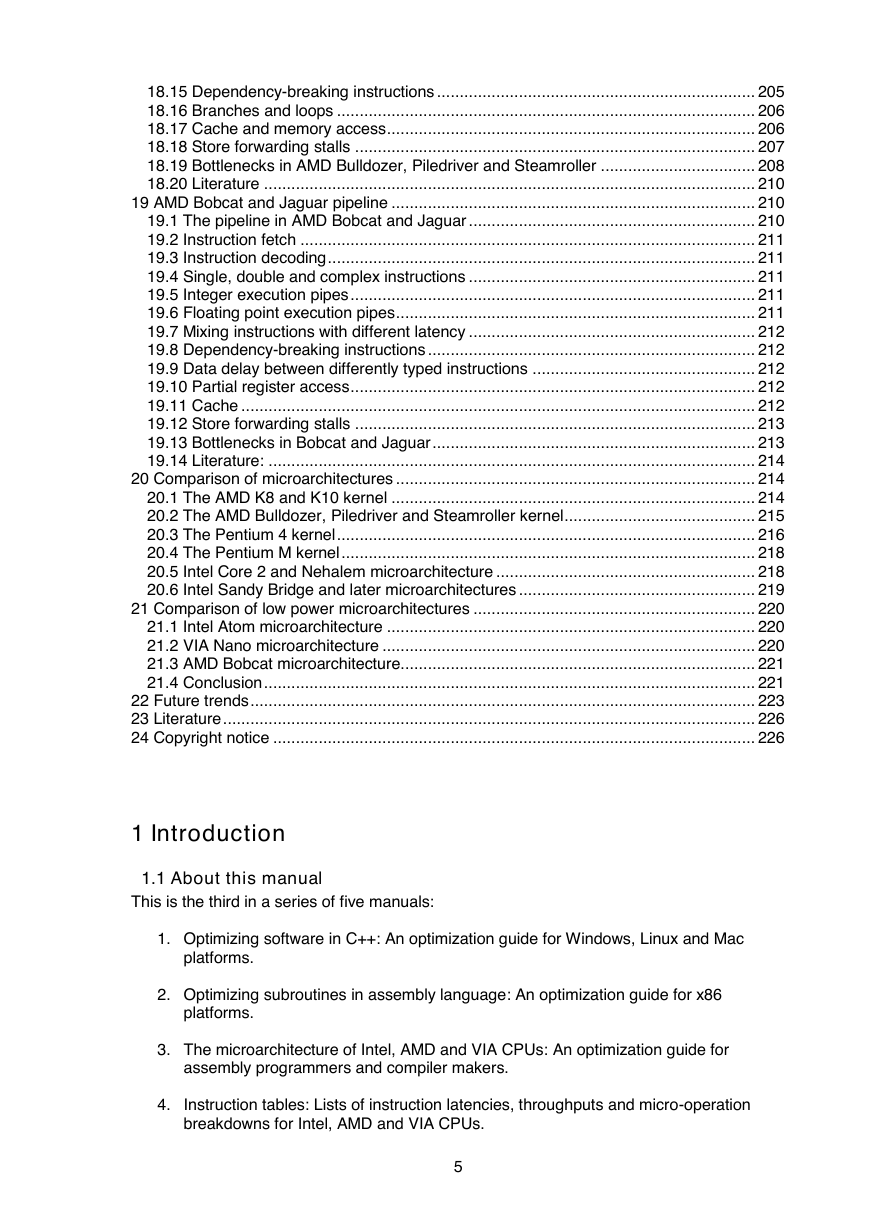

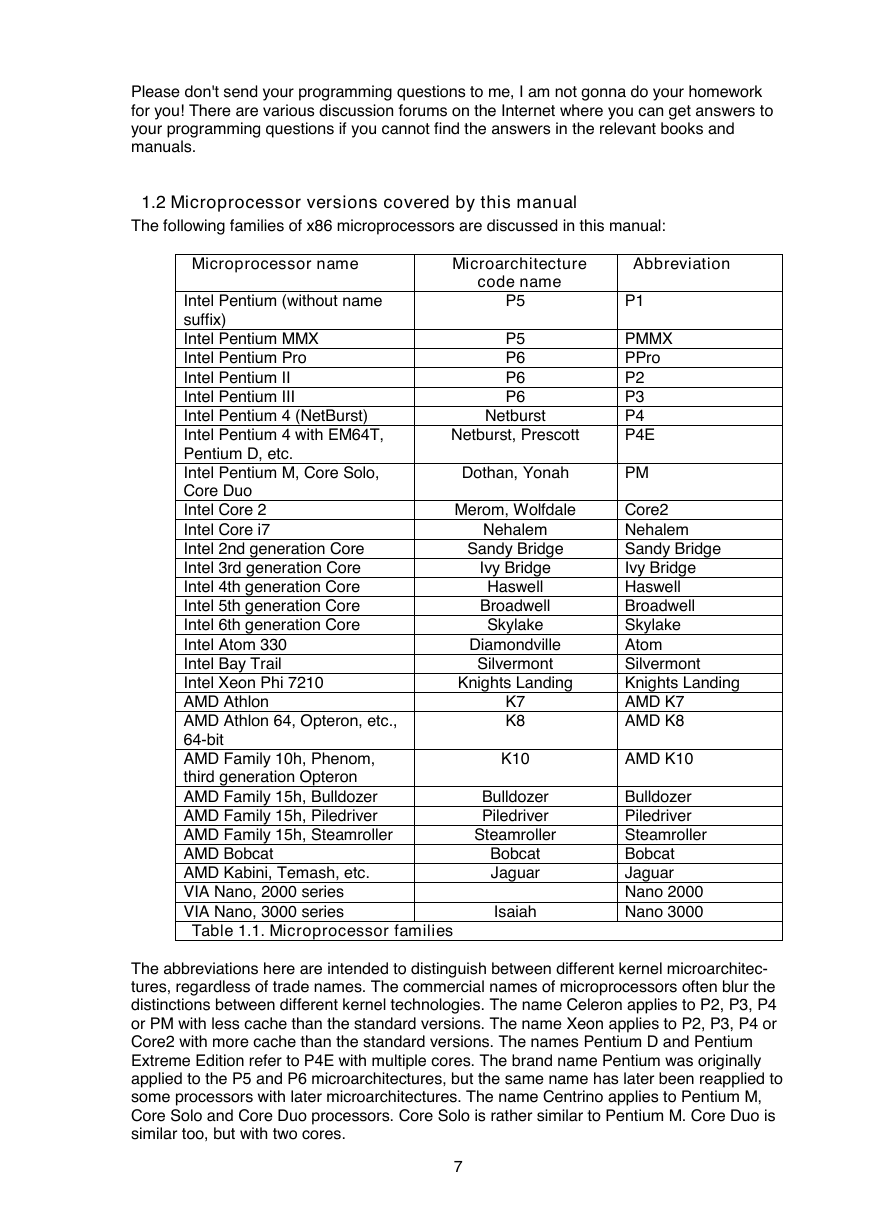
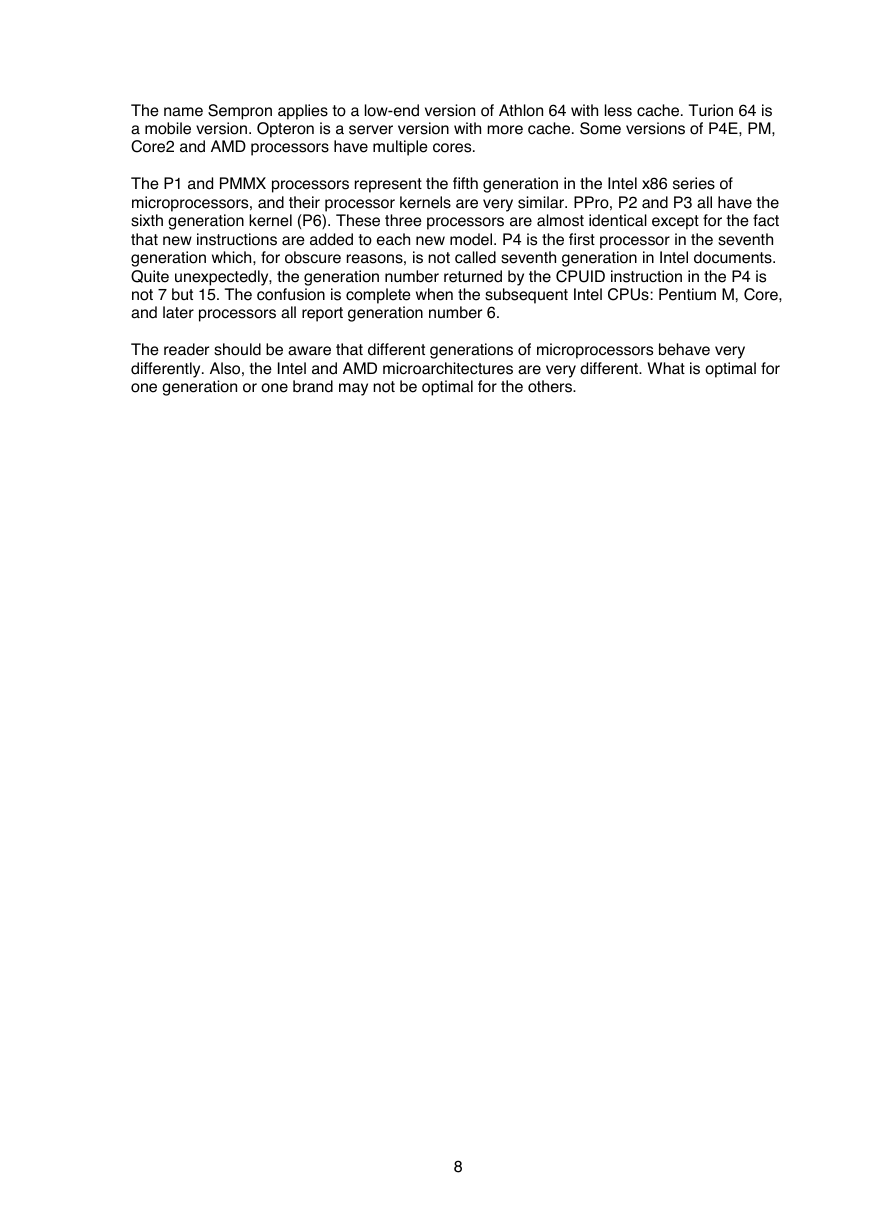








 2023年江西萍乡中考道德与法治真题及答案.doc
2023年江西萍乡中考道德与法治真题及答案.doc 2012年重庆南川中考生物真题及答案.doc
2012年重庆南川中考生物真题及答案.doc 2013年江西师范大学地理学综合及文艺理论基础考研真题.doc
2013年江西师范大学地理学综合及文艺理论基础考研真题.doc 2020年四川甘孜小升初语文真题及答案I卷.doc
2020年四川甘孜小升初语文真题及答案I卷.doc 2020年注册岩土工程师专业基础考试真题及答案.doc
2020年注册岩土工程师专业基础考试真题及答案.doc 2023-2024学年福建省厦门市九年级上学期数学月考试题及答案.doc
2023-2024学年福建省厦门市九年级上学期数学月考试题及答案.doc 2021-2022学年辽宁省沈阳市大东区九年级上学期语文期末试题及答案.doc
2021-2022学年辽宁省沈阳市大东区九年级上学期语文期末试题及答案.doc 2022-2023学年北京东城区初三第一学期物理期末试卷及答案.doc
2022-2023学年北京东城区初三第一学期物理期末试卷及答案.doc 2018上半年江西教师资格初中地理学科知识与教学能力真题及答案.doc
2018上半年江西教师资格初中地理学科知识与教学能力真题及答案.doc 2012年河北国家公务员申论考试真题及答案-省级.doc
2012年河北国家公务员申论考试真题及答案-省级.doc 2020-2021学年江苏省扬州市江都区邵樊片九年级上学期数学第一次质量检测试题及答案.doc
2020-2021学年江苏省扬州市江都区邵樊片九年级上学期数学第一次质量检测试题及答案.doc 2022下半年黑龙江教师资格证中学综合素质真题及答案.doc
2022下半年黑龙江教师资格证中学综合素质真题及答案.doc